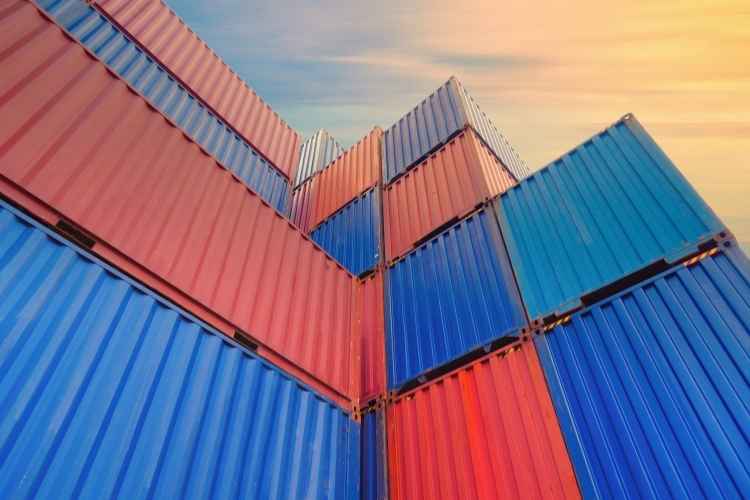About 30 million shipping containers are moving around the globe at any given time.
Containers have transcended the shipping industry to almost become a staple for homeowners and business owners. Aside from storing cargo, these containers are great for storing random items and can make pretty good structures.
If you’re in the market for a shipping container, you might be overwhelmed by the sheer number of options for you to choose from. With so many of them, how do you find the best shipping container for your needs? If this describes your predicament, you’re in the right place.
Today’s guide will look at how you can pick the best shipping container for your specific needs.
Understand the Types of Shipping Containers
Before you start picking out a shipping container, it’s important to first have a good idea of the different types of containers available today. Shipping containers break down into five main types. Let’s have a brief look at each one of them:
Dry Storage Container
This is the most common type of shipping container available today. It’s the first thing that probably comes to your mind when you think of a shipping container.
Dry storage or dry box containers usually measure 20 feet or 40 feet. However, there are high cube containers that measure a little higher than standard containers. These containers carry cargo that doesn’t require special conditions or attention.
Reefer Container
Reefer containers are a special type of shipping container for carrying goods that require refrigeration. These containers have a generator that helps keep the products cool. Shipping companies use them to carry perishable goods like fruits, vegetables, and meat.
Tank Containers
These are containers that mainly transport liquid products like chemicals and the like. These containers usually have an IMO certification that dictates what type of chemicals the container can carry.
Flat Rack Container
Unlike standard containers, flat rack containers have no sides, meaning they can carry larger products that typical containers can’t carry. These goods include large vehicles, equipment, and machinery. They may not be ideal for conventional storage use.
Open Top Container
As the name suggests, an open-top container has its top open. This allows loading from the top, using a crane.
Now that you know the different types of containers, you should be in a better position to pick one type that meets your needs.
Establish the Container’s Purpose
The second step in choosing the right shipping container for you is figuring out what you need the container for. Do you want a container for storing gardening and farm supplies, or do you want one to act as your mobile garden? Defining the container’s purpose will help you narrow down your options to a handful that meet your purpose.
Check Out Container Sizes
Determining the size of your container is arguably the most important factor to consider when picking out a storage container. To find the best size for your shipping container make a list of everything you want to store in the container. Try visualizing what container size will fit all the items in your list.
You can draw dimensions on the floor and try to fit your items within the said dimensions. This helps ensure that you don’t buy a container that’s either too small or too big.
While picking a size for your container, be sure to account for extra storage space. That’s because you never know whether your storage needs will increase in the future. To be on the safe side, get a container that’s slightly larger than what you need.
Understand the Container’s Condition
One thing you can’t overlook is the condition of the container you’re planning to get. Containers are built to last a lifetime, but this doesn’t mean they’re immune to aging. Shipping containers will deteriorate with time, especially if they spend a lot of time on the sea.
As such, it’s a good idea to comprehensively inspect the container before making a purchase. Check for any dents, rust spots, and dings that are common with most containers. Any signs of damage don’t mean that the container is a bad buy because you can rectify minor damages on the container with a few bucks.
However, steer clear of containers with obvious signs of damage or containers that look too old. If you want something foolproof, consider getting a new container. However, it might not be the most feasible option for many people.
The Container’s Price
There’s no doubt that price is an important factor when picking a shipping container, but it shouldn’t be the main one. Containers cost anywhere between $4500 to $7,500, depending on the size of the container. Obviously, the larger the container, the more expensive it will be.
Other factors that influence the price of your container include age, location, condition, and any modifications to the container. When checking the container’s price, keep your eyes peeled for any hidden charges that will have you paying for more than what you intended to pay.
Consider Renting a Container
IF burying a container is a little on the pricier side for you, consider hiring a container instead. By hiring a container, you can get the container you need for a fraction of the price. However, you’ll have to make regular monthly payments, until you no longer need the container.
Renting makes more financial sense than buying a container, especially if you’re on a tight budget. Click here if you’re looking to rent a shipping container for a reasonable price.
Only the Best Shipping Container Will Do
The above information should make finding the best shipping container for your needs a walk in the park. Remember to explore all your options before settling on a shipping container. Also, consider renting a container if buying one seems a bit too far-fetched.
For more informative reads, be sure to check out the other pieces on the site.




















